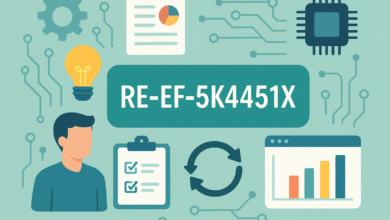Exploring the Highlights of Nummazaki: A Complete Guide for Innovators and Tech Thinkers

Introduction
Have you ever heard of the term highlights of nummazaki and wondered what it’s all about? If you’re an entrepreneur or someone who loves diving into the tech world, then get ready for an exciting discovery. Highlights of nummazaki introduce a unique way of looking at automation, coding, and digital flow building. Whether you create software or just enjoy exploring new frameworks, this emerging tech concept might be your next favorite rabbit hole.
Getting to Know Nummazaki
Where It All Started
The highlights of nummazaki begin with a need—to improve automation and human-readable logic in programming environments. Instead of relying on traditional, rigid coding structures, nummazaki introduces a hybrid idea. It mixes logic-based programming with a syntax that’s easy to follow, making it both powerful and user-friendly.
Core Terms You Should Know
Let’s understand a few essential parts that make up the highlights of nummazaki:
- Tokens: Basic units or symbols used to represent instructions.
- Chains: Sequences of logic designed to automate processes.
- Bridges: Interfaces that link the nummazaki environment with APIs and external platforms.
What Makes It Unique?
Most coding languages require a strict structure. But in nummazaki, you focus on crafting logical flows, not just writing commands. Think of it as creating a visual map instead of typing lines of text. The design encourages adaptability and creativity—perfect for entrepreneurs looking to move fast and build smarter.
Why Nummazaki Matters in Today’s Digital World
Great for Startups
One of the top highlights of nummazaki is how well it fits into the startup culture. New businesses need to move quickly, test ideas, and change direction when necessary. Nummazaki allows them to create minimum viable products (MVPs) and automation systems without starting from zero.
How Developers Use It
Nummazaki is a language that spans across the development stack. Whether it’s backend services, UI workflows, or task automation, it’s useful everywhere. Developers use it to create triggers, manage data pipelines, and link multiple services with minimal effort.
Perfect for AI and Automation Projects
If artificial intelligence and machine learning excite you, here’s another one of the major highlights of nummazaki. It acts as the perfect glue between AI models and real-world applications. You can take smart decisions made by AI and turn them into real actions through automated logic.
Technical Walkthrough
Syntax and Style
Nummazaki’s commands may look confusing at first, especially if you’re new to the concept. But once you spend some time with it, the elegance becomes clear. The structure is inspired by both Python and YAML, offering the readability of scripts with the performance of compiled code.
Compatible Tools and Platforms
Some platforms already support or integrate with the highlights of nummazaki framework:
- FlowBase
- Stacklytic
- ZapHost
Security and Performance
One of the technical highlights of nummazaki is how secure and fast it is. Modular elements like bridges operate in isolated environments, reducing security risks. Plus, the system includes built-in performance optimization tools.
Key Benefits of Using Nummazaki
Adaptable and Scalable
Nummazaki grows with your project. You can start by automating small tasks and gradually use it for large SaaS apps. Its flexibility makes it suitable for both solo developers and large teams.
Budget-Friendly
Another major point in the highlights of nummazaki is its open-source nature. You don’t need to invest in expensive software or rely on closed platforms. It’s ideal for bootstrapped startups or developers working on passion projects.
Supportive Community
There’s a growing community that’s eager to help. From Discord channels to GitHub pages, you’ll find plenty of guidance, ready-made chains, and experts sharing their knowledge.
Drawbacks to Keep in Mind
Hard to Learn at First
If you’re new to coding or come from a non-technical background, the learning curve can feel steep. But once you get past the basics, the payoff is worth it.
Integration Challenges
Older systems often don’t work smoothly with nummazaki. You might need extra tools or middleware to connect legacy platforms to your new logic chains.
Limited Resources
Because the concept is still growing, documentation is still catching up. However, the number of tutorials and community-created content is increasing quickly.
How to Begin Your Nummazaki Journey
Where to Learn
Here are a few starting points:
- The official website: lmbs.io
- YouTube tutorials like “Nummazaki for Beginners”
- The vibrant Discord server and forums
Setting Up Your Workspace
Before starting, make sure you have:
- Node.js or Python
- The Nummazaki CLI tool
- Access to a sandbox platform (e.g., FlowBase)
First Practice Project
A simple beginner project could be an automatic to-do list that sends notifications to Slack. It’s a great way to explore the visual flow features and real-world use cases.
Real-Life Examples
Case Studies
- Startup X used nummazaki and cut down their development time by 40%.
- Agency Y created an onboarding automation that saved 60 work hours every month.
Testimonials
One tech founder shared, “Learning the highlights of nummazaki was like discovering Python for the first time again—but more focused on automation.”
Industries Showing Interest
We’re seeing adoption in sectors such as:
- HealthTech
- EduTech
- Marketing tools
Developer Tips for Success
Write Clean Logic
Use modular chains. Choose clear token names. Avoid making your code too tangled—keep things readable and organized.
Collaborate with Teams
Start using Git immediately. Tools like FlowForge can help your team work together in real time.
Test and Fix Easily
Nummazaki includes a visual debugger. You can test triggers and preview actions without breaking your project.
Scaling Up with Nummazaki
Better Performance
To make things run smoothly, optimize your chains and avoid duplicate actions. Use caching features when needed.
Deployment Options
You can deploy using Docker or through cloud providers like Heroku, Vercel, or Netlify.
Maintain and Monitor
Set alerts for broken logic chains. Use analytics dashboards to watch how users interact with your app and find ways to improve.
What’s Next for Nummazaki?
Future Upgrades
Exciting features are on the roadmap:
- Native Web3 integration
- Built-in support for machine learning
- Enhanced tools for visual design
The Bigger Picture
The open-source community is driving the development. The shared goal? To make automation easier and more accessible to everyone—from developers to creators.
Web3 and Beyond
Think of DAOs running on nummazaki logic. Imagine NFTs triggering live actions. This isn’t science fiction—it’s where the tech is heading.
Conclusion
The highlights of nummazaki show that this isn’t just another programming language—it’s a new way of thinking. Whether you’re building an app, running a business, or just love automation, nummazaki offers powerful tools. Dive into the community, start small, and unlock the potential waiting inside this innovative tech framework.
FAQs
Q1: What is nummazaki used for?
Nummazaki is a logic-building framework used for automation, app development, and creating flexible workflows.
Q2: How hard is it to learn nummazaki?
It has a learning curve, but with community support and tutorials, beginners can start simple and grow from there.
Q3: Is nummazaki open-source?
Yes, nummazaki is open-source, making it affordable and highly customizable.
Q4: What are some key platforms that support nummazaki?
FlowBase, Stacklytic, and ZapHost are among the main platforms integrating nummazaki features.
Q5: Why should startups consider using nummazaki?
Because it’s flexible, scalable, and cost-effective—ideal for creating MVPs and automating tasks quickly.
Read also: Luxury Villas Provence Le Collectionist: A Guide to Unmatched Elegance in Southern France



